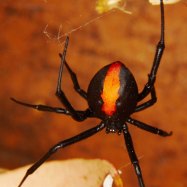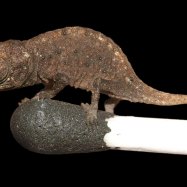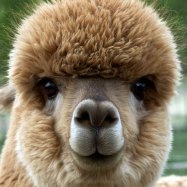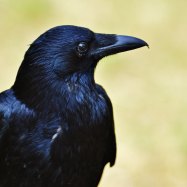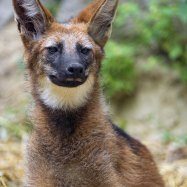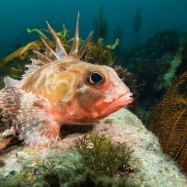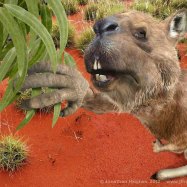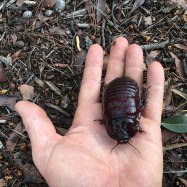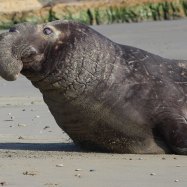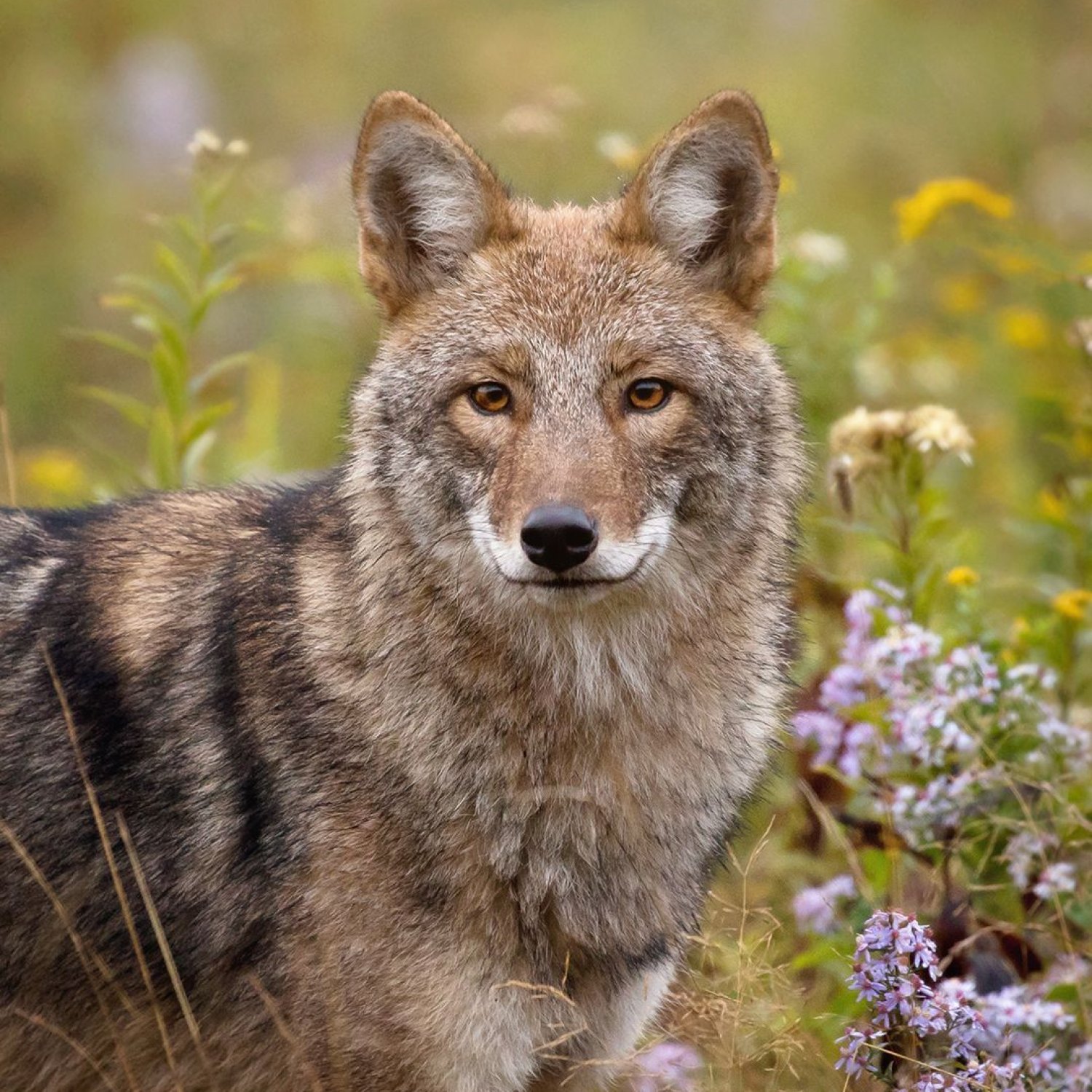
Coyote
The average length of a coyote is around 40-50 inches, including the tail.
Did you know coyotes are found in various locations such as forests, deserts, and even urban areas? They are part of the Canidae family and have a slim body, pointed nose, and a long bushy tail. The average length of a coyote is 40-50 inches, and they can weigh between 20-50 pounds. Keep an eye out for these clever animals on your next outdoor adventure! 🐺 #coyote #animals #nature
Animal Details Summary:
Common Name: Coyote
Kingdom: Animalia
Habitat: Coyotes inhabit a wide variety of habitats including forests, deserts, prairies, mountains, and urban areas.
The Versatile and Adaptive Coyote: A Master of Survival
In the world of nature, there are some animals that stand out for their remarkable abilities to adapt and survive. One such animal is the coyote, a member of the Canidae family and a native of North America. With its scientific name Canis latrans, which means "barking dog," the coyote is known for its unique vocalizations and remarkable intelligence. This cunning and resilient animal has captured the fascination of many, and in this article, we will explore the features that make the coyote such a fascinating and adaptable creature Coyote.An Overview of Coyotes
The coyote (Canis latrans) is a mammal from the class Mammalia and the order Carnivora. It belongs to the same family as wolves, dogs, and foxes - the Canidae family. Measuring around 20-22 inches at the shoulder and weighing between 20-50 pounds, coyotes are considered small to medium-sized predators. They have a slim and agile body, with a pointed nose, large ears, and a long, bushy tail. This tail serves multiple purposes, from balancing while running to communication through different movements.A Range of Habitats
One of the most remarkable features of coyotes is their ability to survive in a wide range of habitats. They are found in almost all types of ecosystems, including forests, deserts, prairies, mountains, and even urban areas. This adaptability is due to their intelligence and varied diet, making them opportunistic feeders. They can utilize a wide range of food sources, making them highly successful in different environments Clownfish.Feeding Habits of Coyotes
Coyotes are opportunistic feeders, which means they will eat whatever is readily available to them. They primarily feed on small mammals like rabbits and rodents, which can make up to 90% of their diet. However, they are also known to feed on birds, reptiles, amphibians, insects, fruits, and carrion. This diverse diet ensures they can survive in different habitats, even if their primary food source is not present.The Versatility of Their Coloration
Coyotes have a fur color that can range from grayish-brown to reddish-brown. The variation in their coat coloration is due to their adaptability to different habitats. In colder regions, they may have thicker and darker coats to blend in with their surroundings, while in warmer regions, they may have lighter coats to help them regulate their body temperature. They also have a light-colored belly and a bushy tail with a black tip, which helps them communicate and distinguish themselves from other members of their species.A Territorial Species
Coyotes are territorial animals and have a well-defined hierarchy within their packs. A pack usually consists of an alpha male and female, their offspring, and sometimes other subordinate adults. They have advanced communication skills, and their vocabulary consists of more than 11 different vocalizations, including barks, howls, growls, and yips. These vocalizations serve to maintain communication within the pack and to warn off potential threats.The Coyote's Country of Origin
Coyotes are native to North America and are widely distributed throughout the United States, Canada, and Mexico. They have adapted well to human development and have expanded their range to include urban areas. They are also known to be present in some parts of Central America and have been introduced to countries like Germany and Australia.An Essential Role in the Ecosystem
Coyotes play a crucial role in the ecosystem, and their presence has a domino effect on other species. As predators, they help control the population of their prey species, ensuring that they do not overgraze or outcompete other animals. They also have a positive impact on plant populations by controlling herbivores that may damage vegetation.Threats to Coyotes and Conservation Efforts
Despite their versatile nature, coyotes face numerous threats and challenges. One of the biggest threats to their survival is human activity. Urbanization and habitat destruction have reduced the available space for coyotes, forcing them to adapt to living in closer proximity to humans. This has caused conflicts, resulting in human-coyote interactions, which can sometimes be fatal for the animals.To help mitigate these conflicts, many organizations and agencies have implemented conservation efforts to protect coyotes and other wildlife. These efforts include public education programs to promote coexistence, habitat restoration, and the implementation of non-lethal methods of controlling coyote populations.
The Importance of Studying Coyotes
As a highly versatile and adaptive species, coyotes offer a wealth of valuable information for scientists and researchers. They provide insight into how animals evolve and adapt to different environments and how they maintain their populations in the face of human development. The coyote's ability to thrive under various conditions makes them a model species for understanding the impacts of climate change on wildlife.A Living Example of Perseverance
Coyotes embody the essence of resilience and perseverance. For centuries, they have adapted to changing environments, faced numerous challenges, and yet, they continue to thrive. Their incredible intelligence, high adaptability, and remarkable communication skills make them one of the most fascinating animals in the natural world.In Conclusion
The coyote's amazing adaptability and survival skills make it one of the most significant species in the animal kingdom. Its diverse diet, advanced communication skills, and ability to thrive in different habitats make it a living example of triumph over adversity. However, as humans continue to encroach on their habitats, it is essential to protect and conserve this remarkable creature. So let us appreciate and admire the versatile coyote, a true master of survival.

Coyote
Animal Details Coyote - Scientific Name: Canis latrans
- Category: Animals C
- Scientific Name: Canis latrans
- Common Name: Coyote
- Kingdom: Animalia
- Phylum: Chordata
- Class: Mammalia
- Order: Carnivora
- Family: Canidae
- Habitat: Coyotes inhabit a wide variety of habitats including forests, deserts, prairies, mountains, and urban areas.
- Feeding Method: Coyotes are opportunistic feeders and have a varied diet. They primarily feed on small mammals like rabbits and rodents, but they are also known to eat birds, reptiles, amphibians, insects, fruits, and carrion.
- Geographical Distribution: Coyotes are native to North America and can be found throughout the United States, Canada, and Mexico.
- Country of Origin: North America
- Location: Coyotes can be found in a wide range of locations including forests, grasslands, deserts, mountains, and urban areas.
- Animal Coloration: Coyotes have a fur color that ranges from grayish-brown to reddish-brown. They have a light-colored belly and a bushy tail with a black tip.
- Body Shape: Coyotes have a slim and agile body with a pointed nose, large ears, and a long bushy tail. They have a height of about 20-22 inches at the shoulder and can weigh between 20-50 pounds.
- Length: The average length of a coyote is around 40-50 inches, including the tail.
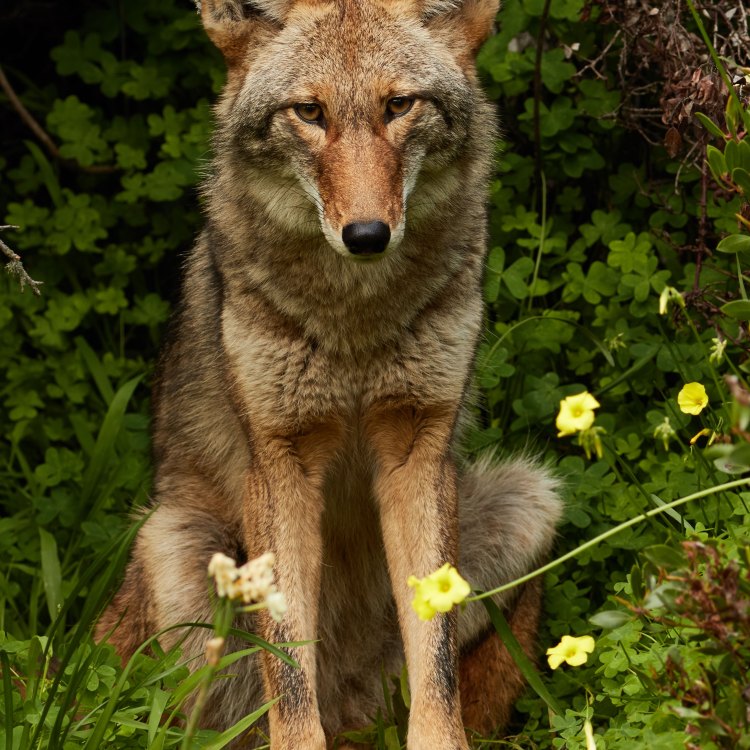
Coyote
- Adult Size: Coyotes reach their full adult size at around 9-12 months of age. Adult coyotes typically weigh between 20-50 pounds.
- Average Lifespan: The average lifespan of a coyote in the wild is 10-14 years.
- Reproduction: Coyotes mate once a year, usually in February or March. After a gestation period of about 60-63 days, the female gives birth to a litter of 4-7 pups.
- Reproductive Behavior: Coyotes form monogamous pairs that mate for life. Both the male and female are involved in rearing the pups.
- Sound or Call: Coyotes are known for their distinctive howling sound, which serves as a form of communication with other pack members.
- Migration Pattern: Coyotes are generally non-migratory, but they may cover large distances in search of food and territory.
- Social Groups: Coyotes are highly social animals that live in family groups called packs. A typical pack consists of an alpha pair (the breeding pair) and their offspring from previous litters.
- Behavior: Coyotes are primarily nocturnal animals but can be active during the day as well. They are highly adaptable and have successfully adapted to urban environments.
- Threats: The main threats to coyotes include habitat loss, hunting, and trapping. They are also vulnerable to diseases such as mange and rabies.
- Conservation Status: The coyote is not currently listed as endangered or threatened. Its population is considered stable.
- Impact on Ecosystem: Coyotes play a crucial role in maintaining the balance of ecosystems. They control populations of small mammals and help control the spread of diseases.
- Human Use: Coyotes have been historically hunted for their fur and as a means of predator control. They are occasionally kept as pets, although this is not recommended due to their wild nature.
- Distinctive Features: Some distinctive features of coyotes include their pointed ears, bushy tail, and their ability to howl.
- Interesting Facts: 1. Coyotes are excellent swimmers and climbers. 2. They can reach speeds of up to 40 miles per hour. 3. Coyotes are known for their adaptability and ability to survive in a wide range of environments. 4. They are one of the few large mammals that have been able to successfully expand their range into urban areas. 5. Coyotes have a highly developed sense of smell and hearing, which aids in hunting and communication.
- Predator: Coyotes have few natural predators, but they may occasionally be hunted by larger predators such as wolves, cougars, and bears.
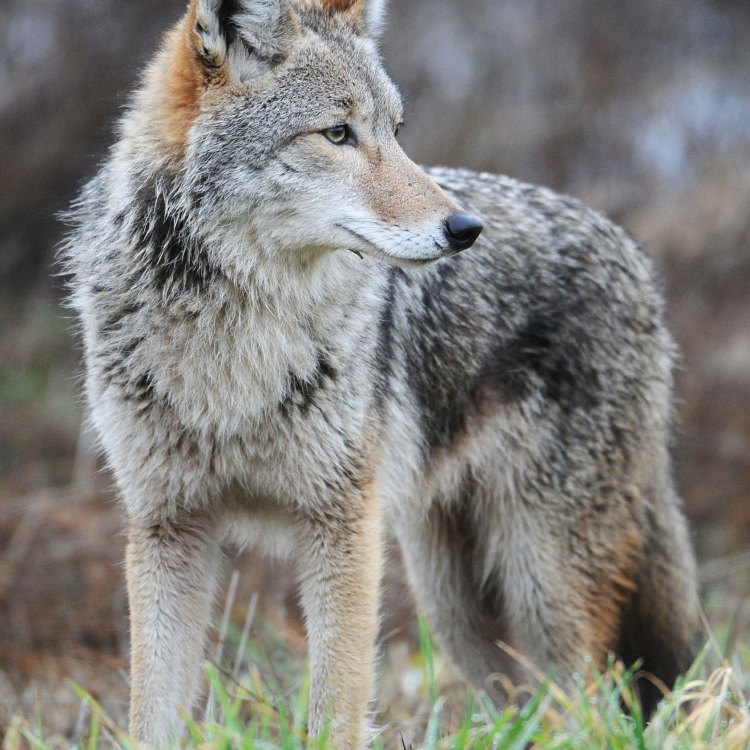
Canis latrans
The Incredible Canine: A Closer Look at Coyotes and Their Unique Features
When we think of the word "coyote," many of us may conjure up images of a cunning and elusive trickster from Native American folklore. But aside from their mythological reputation, coyotes are fascinating creatures with a wide range of unique features and behaviors. From their distinctive howling call to their impressive physical abilities, these canines have captured the attention and curiosity of humans for centuries. In this article, we will delve deeper into the world of coyotes and explore what makes them truly remarkable animals PeaceOfAnimals.Com.Adult Size and Lifespan
Coyotes reach adulthood at around 9-12 months of age and typically weigh between 20-50 pounds. However, their size can vary greatly depending on factors such as their location, habitat, and access to food. For example, coyotes living in urban environments tend to be larger due to their abundant access to food sources such as garbage and small prey.
In the wild, the average lifespan of a coyote is 10-14 years. However, some have been known to live up to 20 years in captivity. Unfortunately, coyotes often fall prey to diseases, hunting, and trapping, resulting in a shorter lifespan in the wild.
Reproduction and Behavior
Coyotes mate once a year, typically in February or March. After a gestation period of about 60-63 days, the female gives birth to a litter of 4-7 pups. The male and female coyotes form monogamous pairs that mate for life and both are involved in rearing the pups Cougar. This unique behavior of pair bonding and shared parental duties sets coyotes apart from other canines such as wolves, who often have a dominant breeding pair and pack hierarchy.
In terms of behavior, coyotes are primarily nocturnal animals but can also be active during the day. They are highly adaptable creatures and have successfully expanded their range into urban environments, where they have become known as "urban coyotes." These adaptable behaviors and their ability to survive in a wide range of environments make them formidable and resilient animals.
Sound or Call
One of the most distinctive characteristics of coyotes is their distinctive howling sound. This howling is not only a form of communication, but also serves as a means of establishing territory and pack hierarchy. Each coyote has a unique howl, allowing them to recognize and locate members of their pack even at a great distance.
Migration Pattern and Social Groups
Coyotes are generally non-migratory, meaning they do not have specific migration patterns. However, they may cover large distances in search of food and territory. As highly social animals, coyotes live in family groups called packs. A typical pack consists of an alpha pair (the breeding pair) and their offspring from previous litters. The alpha pair is the leader, and the other pack members maintain a strict hierarchy. These social groups play a crucial role in the coyote's survival, as they hunt and protect each other.
Threats and Conservation Status
The main threats to coyotes include habitat loss, hunting, and trapping. Human interference through urbanization has led to a decline in the coyote's natural habitat, making them more vulnerable to these threats. They are also susceptible to diseases such as mange and rabies, which can significantly impact their populations.
Despite these challenges, the coyote is currently not listed as endangered or threatened. Their population is considered stable, and they continue to thrive in different environments. However, responsible conservation efforts are necessary to ensure their continued survival and protection.
Impact on Ecosystem and Human Use
As predators, coyotes play a crucial role in maintaining the balance of ecosystems. They control populations of small mammals and help control the spread of diseases. Their adaptability and ability to successfully expand into urban areas have also made them useful in controlling populations of pests such as rodents.
Additionally, coyotes have been historically hunted for their fur and as a means of predator control. They were once an essential part of the fur trade industry, and their pelts were highly sought after. While still hunted in some areas, they are now mostly managed through regulated hunting practices.
Distinctive Features and Interesting Facts
Some distinctive features of coyotes include their pointed ears, bushy tail, and their ability to howl. However, these are just a few of the many unique physical and behavioral traits that make coyotes stand out. Here are five more interesting facts about these incredible canines:
1. Coyotes are excellent swimmers and climbers, allowing them to access new food sources and evade predators.
2. They can reach speeds of up to 40 miles per hour, making them fast and agile hunters.
3. Coyotes are opportunistic feeders and have a varied diet, including small mammals, birds, insects, and even fruits and vegetables.
4. They are one of the few large mammals that have successfully expanded their range into urban areas, adapting to human presence and becoming a common sight in cities.
5. Coyotes have a highly developed sense of smell and hearing, which aids in hunting and communication. They can detect prey up to 2 miles away and can hear frequencies that humans cannot.
Predators of Coyotes
Coyotes have few natural predators, but they may occasionally be hunted by larger predators such as wolves, cougars, and bears. These predators are a significant threat to coyote pups, as they are vulnerable and defenseless in their first few months of life. However, coyotes have successfully adapted to living alongside these larger carnivores and have learned to coexist with them in their ecosystems.
In conclusion, coyotes are truly remarkable and unique animals. From their adaptive nature to their distinctive howling call, they have captured the hearts and minds of humans for centuries. As we continue to learn more about these incredible canines, it is essential to remember to coexist with them and protect their role in maintaining a healthy and balanced ecosystem. After all, the coyote's survival is an essential part of our natural heritage and a testament to the resilience and tenacity of the animal kingdom.
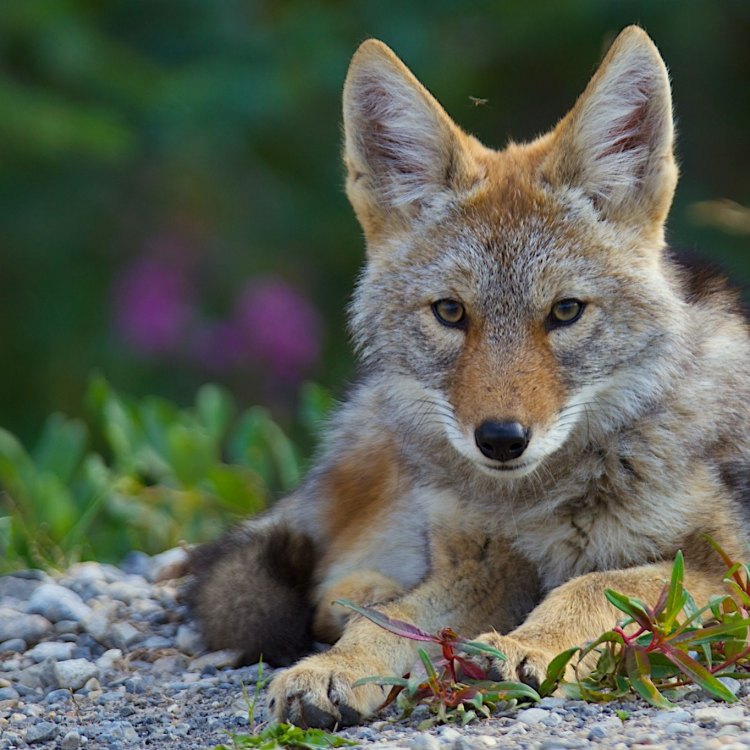
The Versatile and Adaptive Coyote: A Master of Survival
Disclaimer: The content provided is for informational purposes only. We cannot guarantee the accuracy of the information on this page 100%. All information provided here may change without prior notice.

